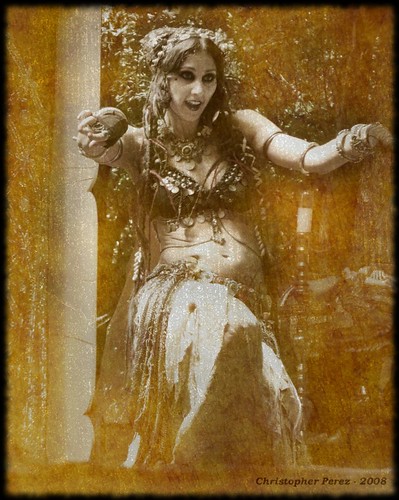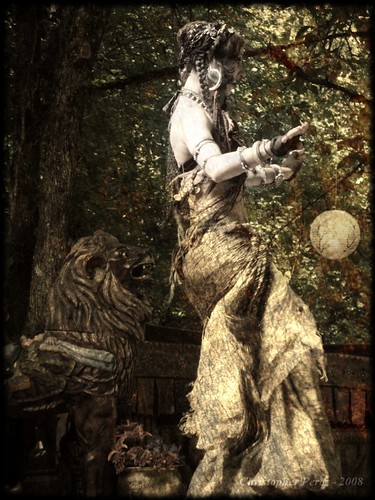I have to laugh to myself every time I read somewhere on the 'net (like over on DPReview, or MF Forums, or Fred Mirdanda's forums) that anyone can tell the difference between images made using Zeiss lenses and those made with something else. To some folks it appears that the magic is obvious. The Leica crowd sometimes behaves the same way. "This is the best lens there is and you can see the quality in your final print" they seem to be saying.
I have been testing lenses and cameras systems for over 15 years and have learned a thing or two about how commercially available optical systems behave. People who tell you they can see the difference between lenses, between manufacturers, or between focal lengths are just blowing smoke.
Seriously.
Want to try something that should be easy for kinds of folk who "know" their Zeiss or Leica lenses are visibly superior to all other makes? Click here and take a very close look at these results.
I used a Canon 7D camera. It was the highest density sensor of any DSLR currently made at the time I performed this test. The sensor can resolve 116 line pair per mm. You can calculate this from the number of image nodes in your file divided by the size of the sensor in mm's. To get line pairs per mm, divide the result by two. You will confirm that the Canon 7D is capable of resolving 116 lppmm. To me this says that if there are differences between lens resolution and/or recorded image contrast you should be able to see them quicker with the 7D than with other cameras, regardless of the number of pixels those cameras have. It's about the size of each sensor site, not the total number.
There are 9 lenses. The focal lengths go from 50mm's through to over 100mm's. There is a mix of Zeiss (oh ya, bring it on!, say's I), Nikon, Pentax, and Canon glass. Some of the lenses are very old indeed. Some are brand new. I guess I should say that there are three Nikkors, two Pentax, two Zeiss, and maybe a Leica lens or two, balanced out by Canon.
It will be impossible for folks to know, but did I start at f/1.2? f/1.4? or f/2? Did I end up at f/5.6 or f/8? Did I include zoom lenses or are these all primes? I did my best to achieve correct focus in all cases.
Each 300x300 pixel image is a 100 percent crop. I shot raw and used DPP to convert the result to jpg. To see differences between lenses I set the sharpness at 3 on the RAW tab of the Tools window in DPP. If I didn't do this, you would have an even harder time telling the differences between these lenses.
So... which lenses are which? Where are those Zeiss lenses? Did I throw in a Leica optic or two just to mix things up a bit? Did I really include a couple "ringers", including two or three or four lenses that cost less than $20 each?
You decide. And if you get it right, I'll buy you a beer.
I doubt anyone will come close, so let me take this opportunity to stress, once again, that it's better to have a lens than not, and that the sharpest lens in my kit is a tripod.
Said another way, I really do not believe that it matters what lens you use. If you are creative, then you are capable of making wonderful images, regardless of what equipment you own.
I have been testing lenses and cameras systems for over 15 years and have learned a thing or two about how commercially available optical systems behave. People who tell you they can see the difference between lenses, between manufacturers, or between focal lengths are just blowing smoke.
Seriously.
Want to try something that should be easy for kinds of folk who "know" their Zeiss or Leica lenses are visibly superior to all other makes? Click here and take a very close look at these results.
I used a Canon 7D camera. It was the highest density sensor of any DSLR currently made at the time I performed this test. The sensor can resolve 116 line pair per mm. You can calculate this from the number of image nodes in your file divided by the size of the sensor in mm's. To get line pairs per mm, divide the result by two. You will confirm that the Canon 7D is capable of resolving 116 lppmm. To me this says that if there are differences between lens resolution and/or recorded image contrast you should be able to see them quicker with the 7D than with other cameras, regardless of the number of pixels those cameras have. It's about the size of each sensor site, not the total number.
There are 9 lenses. The focal lengths go from 50mm's through to over 100mm's. There is a mix of Zeiss (oh ya, bring it on!, say's I), Nikon, Pentax, and Canon glass. Some of the lenses are very old indeed. Some are brand new. I guess I should say that there are three Nikkors, two Pentax, two Zeiss, and maybe a Leica lens or two, balanced out by Canon.
It will be impossible for folks to know, but did I start at f/1.2? f/1.4? or f/2? Did I end up at f/5.6 or f/8? Did I include zoom lenses or are these all primes? I did my best to achieve correct focus in all cases.
Each 300x300 pixel image is a 100 percent crop. I shot raw and used DPP to convert the result to jpg. To see differences between lenses I set the sharpness at 3 on the RAW tab of the Tools window in DPP. If I didn't do this, you would have an even harder time telling the differences between these lenses.
So... which lenses are which? Where are those Zeiss lenses? Did I throw in a Leica optic or two just to mix things up a bit? Did I really include a couple "ringers", including two or three or four lenses that cost less than $20 each?
You decide. And if you get it right, I'll buy you a beer.
I doubt anyone will come close, so let me take this opportunity to stress, once again, that it's better to have a lens than not, and that the sharpest lens in my kit is a tripod.
Said another way, I really do not believe that it matters what lens you use. If you are creative, then you are capable of making wonderful images, regardless of what equipment you own.

